The EU Is Much Less Dependent On Russian Gas But Still Isn't Ready To Give It Up [GGP]
After cutting natural gas supplies to Europe -- in retaliation for Western sanctions on Russia for the February 2022 full-scale invasion of Ukraine -- Moscow and pro-Kremlin media were almost gleefully predicting that Europe, without the benevolence of Russian gas supplies, would become a wasteland of dark, iced-over cities. Europeans would be lucky if they didn't freeze to death in their beds.
But while energy prices spiked, the EU didn't freeze, helped by a relatively mild winter. To cope with the shortfall of Russian gas throughout the colder months and for the rest of 2023, the EU stockpiled supplies; increased imports of liquefied natural gas (LNG), mostly from the United States; encouraged consumers to cut consumption and improve efficiency; and relied more on renewables such as wind and solar.
|
Advertisement: The National Gas Company of Trinidad and Tobago Limited (NGC) NGC’s HSSE strategy is reflective and supportive of the organisational vision to become a leader in the global energy business. |
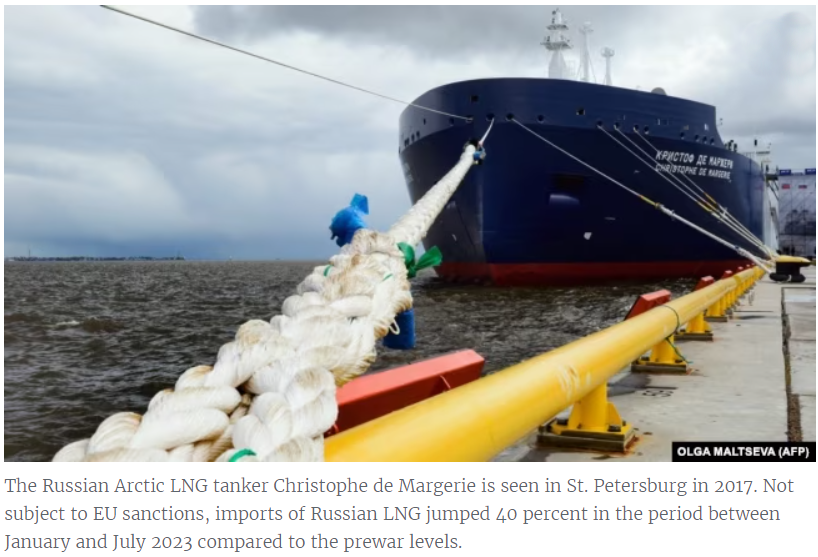 "The European Union has made incredible progress since February 2022 to reduce its dependence on Russian pipeline gas imports," Akos Losz, a senior research associate at New York's Columbia University's Center on Global Energy Policy, told RFE/RL.
"The European Union has made incredible progress since February 2022 to reduce its dependence on Russian pipeline gas imports," Akos Losz, a senior research associate at New York's Columbia University's Center on Global Energy Policy, told RFE/RL.
That, experts say, is good for the EU's long-term energy security. Yet cutting Russia out of the energy equation completely will be much harder to achieve across a divided EU, where countries not only have very different energy needs but very different relationships with the Kremlin.
"The remaining flows are more difficult to phase down due to the combination of geography, contractual commitments, and -- in some cases -- political expediency," Losz said.
At the time Moscow launched its 2022 invasion of Ukraine, the EU was largely dependent on Russia for gas. Overall, Russia provided more than 40 percent of the EU's gas imports -- supplying as much as 95 percent of Hungary's gas to less than 10 percent of Spain's in 2021, according to EU's official statistics office Eurostat. The biggest net importer of Russian gas in the EU, however, was Germany with 55 billion cubic meters in 2021, making up over 65 percent of the country's gas imports.
Before the February invasion, exports of Russian gas to the EU were actually expected to increase, with the near completion of a new pipeline: Nord Stream 2. Like its older sibling, Nord Stream 1, the new pipeline was built to transport gas from Russia to Germany under the Baltic Sea and was financed by the Russian state energy giant Gazprom and other European energy companies. Warnings of the geopolitical risks of overdependence on Russian gas largely fell on deaf ears within the bloc.
"[Russia] always uses energy as a blackmailing tool," Philipp Lausberg, an analyst at the Brussels-based European Policy Center, told RFE/RL. "This is clearly the most powerful weapon they have."
Ukraine knew only too well how that "blackmail" worked, as for decades Moscow had regularly resorted to turning off the taps in its spats with Kyiv.
Fewer Routes For Russian Gas
Imports of Russian gas to the EU are now down by roughly one-third, when compared to levels before Russia's 2022 invasion of Ukraine. According to figures from Eurostat, in the third quarter of 2021, 39 percent of the EU's gas came from Russia. Two years later, in the third quarter of 2023, that amount is down to 12 percent.
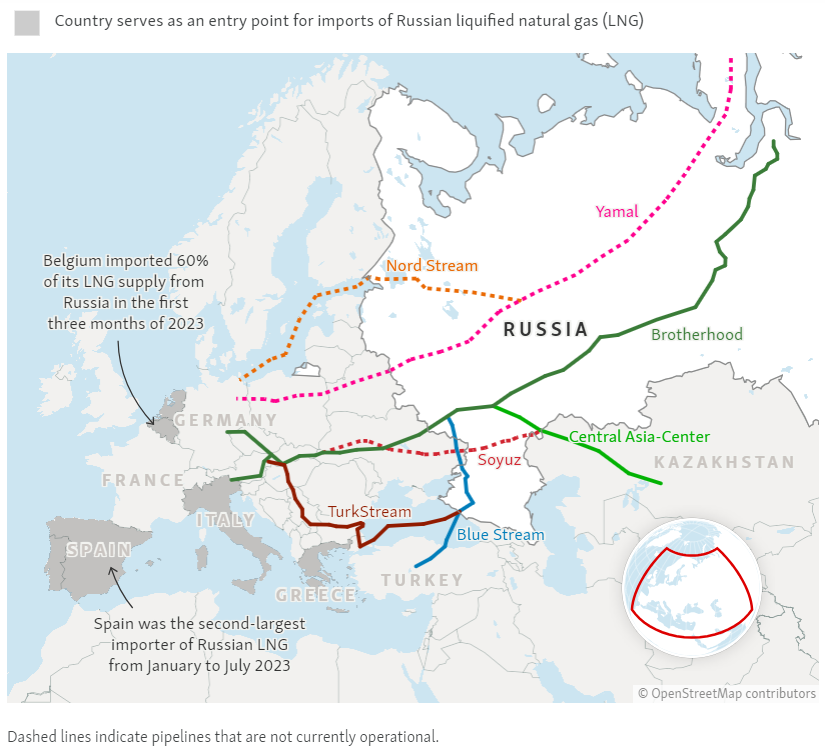
This reduction was partly out of necessity, as Russia unilaterally cut off supplies to some of its European customers in 2022, causing gas prices to hit record highs. Among them were Bulgaria, Poland, Finland, and the Netherlands, which refused to pay for Russian gas in rubles -- a condition imposed on "unfriendly countries," who usually paid in dollars or euros as a way to sidestep Western financial sanctions against Russia's central bank. On August 31, 2022, Moscow suspended deliveries to Europe through Nord Stream 1 for what it said would be three days of routine maintenance. Since then, the pipeline has remained offline.
Russian Gas Flows To Europe
Three of Russia's major routes for shipping gas to the EU have been closed since 2022. In May of that year, Ukraine's Gas Transmission System Operator declared force majeure -- a clause invoked when a business is hit by unforeseeable circumstances -- saying that it no longer had operational control over infrastructure on territory occupied by Russia and halted transit flows through Sokhranivka, one of the two entry points of Russian gas into Ukraine.
Also in May of that year, the Yamal-Europe pipeline, a joint Russian-Belarusian-Polish project that shipped gas from Russia to Poland and Germany, stopped operating after Moscow halted flows to Poland and sanctioned the firm that owns the Polish section of the pipeline. Poland is now using its section of the pipeline to import gas from Germany.
Following Russia's invasion of Ukraine, Berlin put on hold its certification of the Nord Stream 2 pipeline, which hadn't yet started transporting Russian gas to Germany. Then, in September 2022, explosions destroyed parts of Nord Stream 1 and Nord Stream 2, making the pipelines inoperable. Experts concluded that the explosions were sabotage, although separate investigations have not found anything conclusive about the perpetrator.
That means Russian gas deliveries to Europe via pipeline are currently limited to two routes: the first through the European leg of TurkStream, a joint Gazprom-Turkish project that ships gas from Russia to Turkey under the Black Sea and then onwards to Central and Southeastern Europe; the second via Ukraine through the Sudzha entry point on the border with Russia.
Additionally, the overall consumption of natural gas in the EU has decreased by almost 18 percent, as part of a bloc-wide effort to diversify energy supplies, increase efficiency, and invest in renewable sources. The EU has committed to end dependency on Russian fossil fuel imports by 2027 through its REPowerEU Plan and, according to the European Commission, is on track to meet that target.
Halting Ukrainian Flows
Supplies of Russian gas could further decrease in the years ahead, as the already limited transit of gas through Ukraine might not continue past December 2024. Russia's current contract with Ukraine is set to expire, and both Kyiv and Moscow have signaled that they don't plan to extend it.
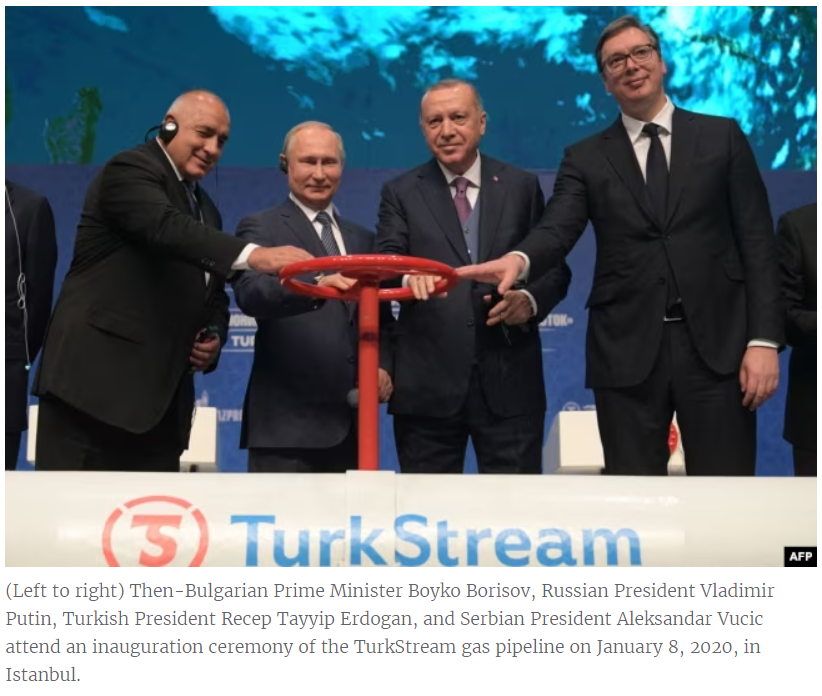 While this doesn't automatically mean that flows through Ukraine will completely cease from January 2025, it is unlikely that the volumes will continue at the current levels. The Ukrainian transit corridor "could theoretically function" based on short-term capacity bookings from 2025 onwards, said energy expert Losz. But "this would require a basic level of trust and working relationship between the companies involved, and that is in very short supply these days."
While this doesn't automatically mean that flows through Ukraine will completely cease from January 2025, it is unlikely that the volumes will continue at the current levels. The Ukrainian transit corridor "could theoretically function" based on short-term capacity bookings from 2025 onwards, said energy expert Losz. But "this would require a basic level of trust and working relationship between the companies involved, and that is in very short supply these days."
Halting the remaining gas flows through Ukraine would impact several European countries still receiving Russian gas through this transit corridor. Among them is Austria, which before the invasion got nearly 80 percent of its gas from Russia. Austrian energy company OMV has a long-term supply contract with Russia's Gazprom valid until 2040, with deliveries arriving through Ukraine. OMV's head, Alfred Stern, told the London-based Financial Times in July that it would continue taking the gas as long as Gazprom will continue to supply it.
Slovakia, Italy, and Croatia also receive Russian gas through Ukrainian transit routes under long-term contracts with Gazprom, according to the Center on Global Energy Policy. But those countries, according to Losz, a researcher at the center, "have more than enough import capacity to bring in alternative supplies," although they would come "at a higher price and through more complicated transit routes."
EU candidate Moldova might likely fare worse with a sudden stoppage of Ukrainian gas flows. While Gazprom provides gas supplies only to Moldova's Russian-backed breakaway Transdniester region, Moldova buys a significant share of the electricity it uses from the gas-fired Cuciurgan power plant in Transdniester. A sudden disruption of gas deliveries could effectively leave a large part of the country without electricity.
In an October interview with RFE/RL, Moldovan President Maia Sandu said that her country was now building a direct high-voltage connection to import electricity from Romania and allow the country to be "fully independent." The transmission line is expected to be finished before 2025.
Giving Up Is Hard
Completely abstaining from Russian gas won't be easy for the EU and Russian flows are expected to continue, at least for a while.
Lausberg from the European Policy Center noted that while some countries "have significantly decoupled from Russia when it comes to energy," others -- like Hungary, Slovakia, Austria, as well as Serbia -- are still dependent on Russian gas and are not ready to give that up for both economic and political reasons.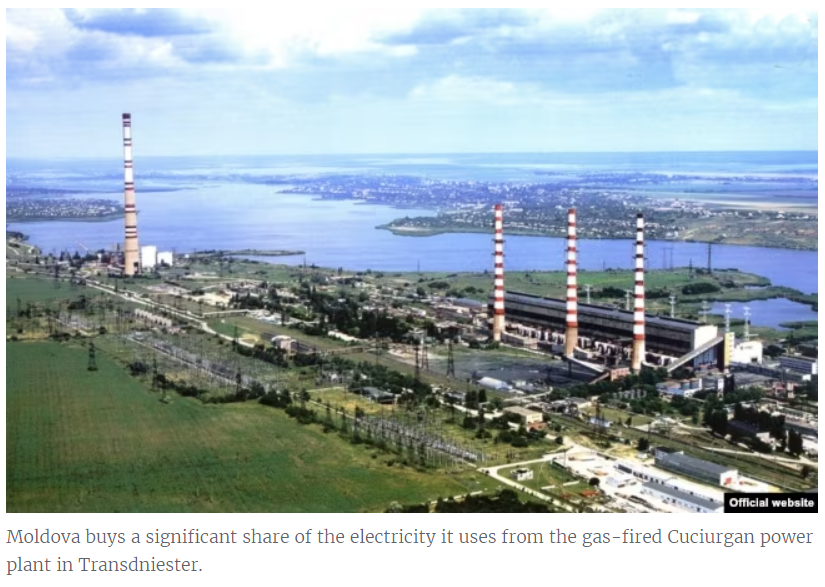
TurkStream is a case in point. The European leg of the pipeline, which utilizes new and existing infrastructure, transports gas farther on to the European Union via Bulgaria. Although Moscow unilaterally halted deliveries to Bulgaria in April 2022, with Gazprom saying that it had not received payments in rubles as requested, TurkStream continues to supply Serbia, Hungary, North Macedonia, Bosnia-Herzegovina, and Greece through its network of pipelines.
"Some countries in Central and Eastern Europe, especially Hungary, are trying to keep close ties with Putin," Lausberg said, "and are ready to rely longer on Russian gas imports because they see it as politically expedient, as a tool in their games between the EU and Russia to use as a bargaining chip on both sides."
Hungary, which has been Russia's strongest ally in the EU, receives most of its natural gas from Russia. In 2021, Prime Minister Victor Orban's government negotiated a 15-year contract, under which Gazprom would ship 4.5 billion cubic meters of natural gas to Hungary annually, via TurkStream and via Ukraine. In 2022, after Russia's invasion, Budapest signed a new deal with Moscow for additional quantities of Russian gas. Most of the deliveries -- 3.5 billion cubic meters out of the 4.5 billion total under the long-term contract, plus the additional quantities -- come through TurkStream, with a smaller portion being delivered through Ukraine.
It doesn't look like Hungary wants to stop those gas supplies anytime soon. In October, Bulgaria imposed a tax on Russian gas transit to the amount of 20 leva ($10.80) per megawatt hour. Sofia said it was aiming to make it less profitable for Gazprom to ship gas via Bulgaria, in order to reduce the profits going into the Kremlin's war chest, as well as to reduce the region's reliance on Russian energy.
Hungary hit back, threatening to veto Bulgaria's entry into the passport-free Schengen zone, unless it abolished the transit fee for Russian gas. Bulgaria relented, with the country's parliament voting to abolish the tax. Belgrade also threatened to respond to Sofia's move, saying it was directed against Hungary and Serbia, which also imports most of its gas from Russia through Bulgaria under a long-term contract with Gazprom that runs until 2025.
The angry reactions were motivated not only by the potential price impact but also by a "perceived risk to supply security," Losz said. "Both Hungary and Serbia see Russian gas as fundamental to their energy security, regardless of the geopolitical ramifications, and they receive their gas on highly favorable terms compared to the alternatives," he added.
The LNG Factor
While imports of Russian gas via pipeline to the EU have decreased since February 2022, Russia has increased from prewar levels its LNG exports to the bloc. According to data from Eurostat, in 2023, the United States has supplied the majority of the EU's LNG (40 percent), followed by Russia and Qatar, which both have a market share of around 13 precent.
Not subject to EU sanctions, imports of Russian LNG, mostly via tankers, jumped 40 percent in the period between January and July 2023 compared to the prewar levels, according to an August report by the environmental watchdog Global Witness.
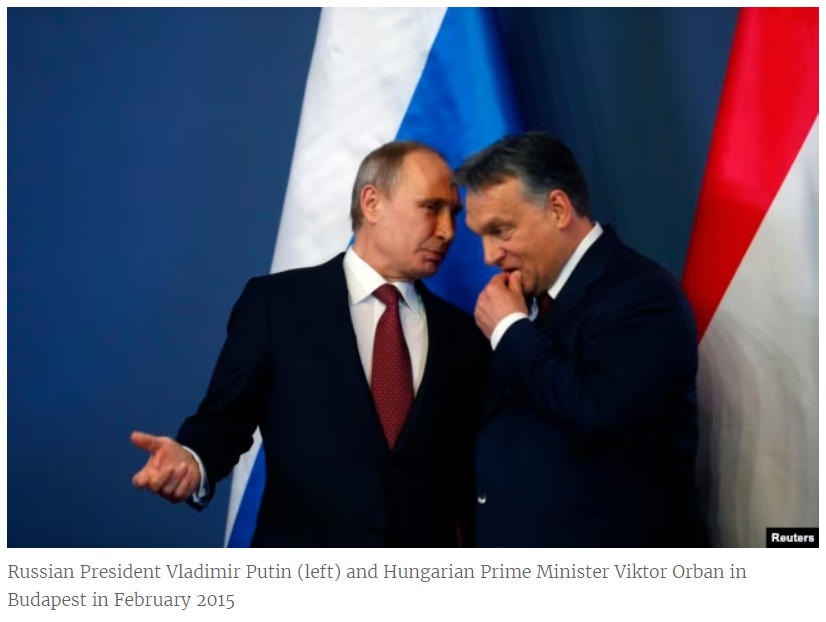 "EU countries now buy the majority of Russia's [gas] supply, propping up one of the Kremlin's most important sources of revenue," the report said.
"EU countries now buy the majority of Russia's [gas] supply, propping up one of the Kremlin's most important sources of revenue," the report said.
Some of this LNG, however, is shipped onwards to other markets, some in the European Union, according to a June report by the Center for the Study Of Democracy, a Bulgaria-based think tank.
Bulgaria, for example, has indirectly bought Russian LNG, which was initially destined for Greek companies with long-term agreements with Gazprom. Another example is Germany, which received 23 percent of its natural gas imports from Belgium in the first three months of 2023. During the same time period, according to the Center for the Study of Democracy report, Belgium imported 60 percent of its LNG supply from Russia.
In October, the European Commission acknowledged the increase in Russian LNG imports in its annual State of the Energy Union report but said that "they represent a very small portion of overall gas imports."
These shipments are likely to continue, according to Losz, unless the EU imposes a wholesale ban on Russian LNG imports. In July, Ukrainian climate activists lobbied the European Commission, calling for a complete ban of imports of Russian LNG to the EU. However, in September, Spain -- which holds the rotating EU Presidency until the end of 2023 and is the bloc's biggest consumer of Russian LNG -- said there was no plan in the short-term to ban imports of Russian liquefied natural gas.
Despite the EU considerably reducing its imports of Russian gas, experts say that it is unlikely that the bloc will be able to fully cut Russia off as a supplier. One reason why some European countries will have continued interest in Russian gas supplies, Lausberg said, is because "a lot of these countries are landlocked. For them, it is much harder to get LNG gas. And the other reason is that Russian gas is still comparatively cheap."
"The urgency to go to zero has somewhat diminished, and I expect that it will take longer than the 2027 target date in the REPowerEU Plan to completely eliminate Russian gas from the EU energy mix," Losz said. He noted, however, that the current level of dependence on Russian gas is "much more manageable" than it was before.
"Russian gas dependence is no longer the economy-wrecking menace for the EU that it once was not too long ago," he said.
Originally published by Radio Free Europe/Radio Liberty.
The statements, opinions and data contained in the content published in Global Gas Perspectives are solely those of the individual authors and contributors and not of the publisher and the editor(s) of Natural Gas World.




